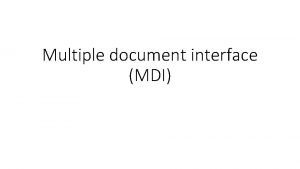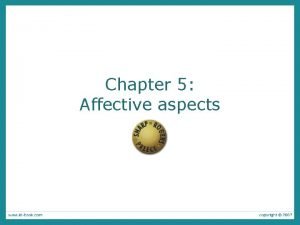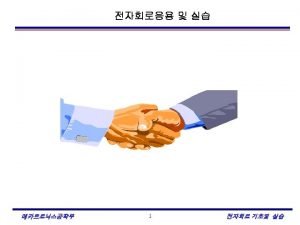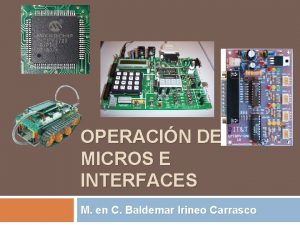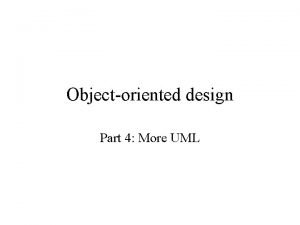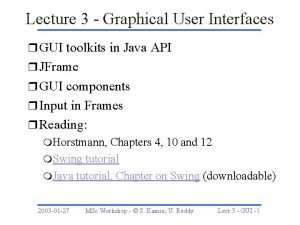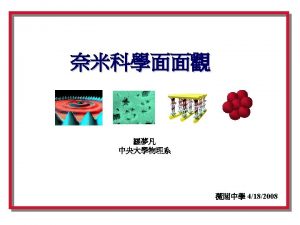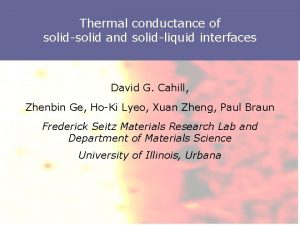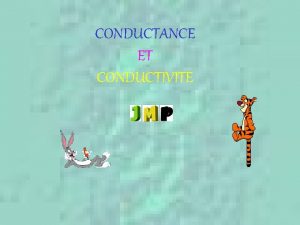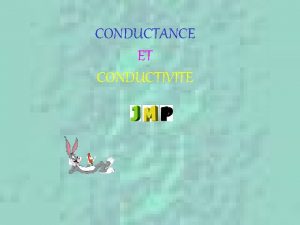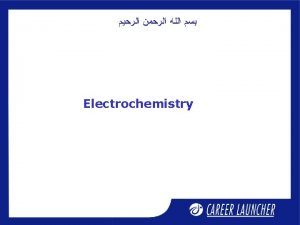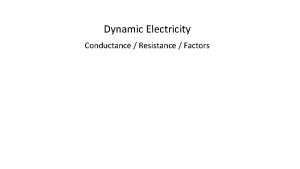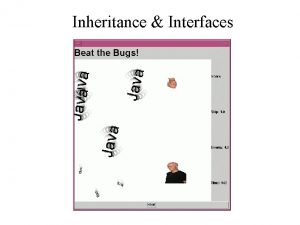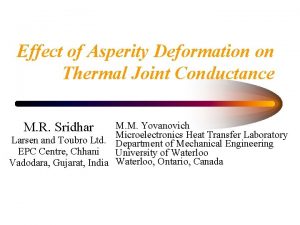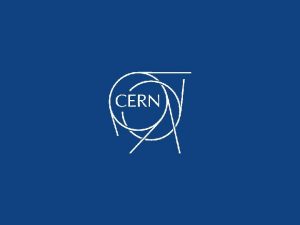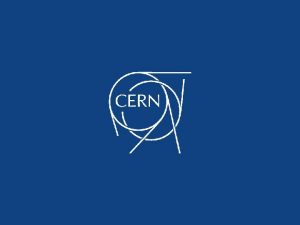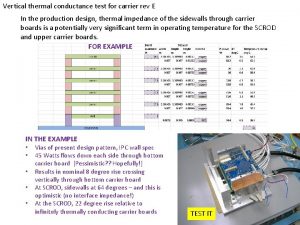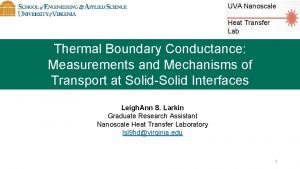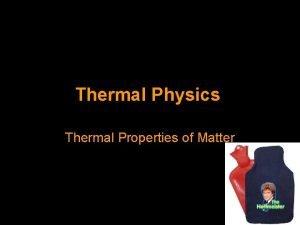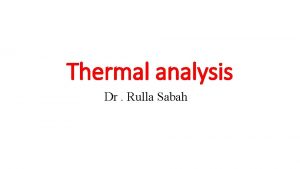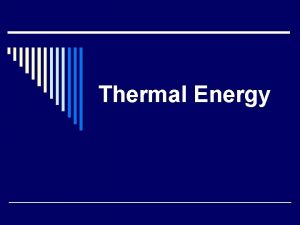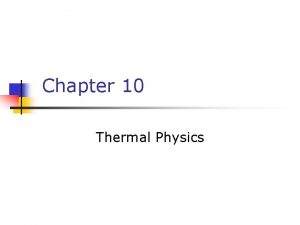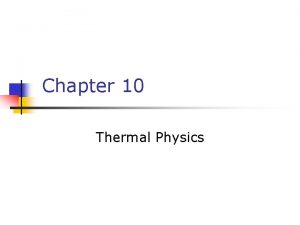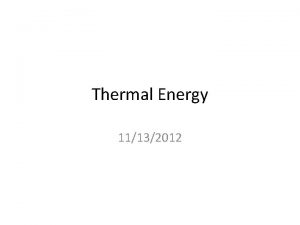Thermal conductance of interfaces David G Cahill Frederick


































- Slides: 34

Thermal conductance of interfaces David G. Cahill Frederick Seitz Materials Research Lab and Department of Materials Science University of Illinois, Urbana lecture for ECE 598 EP, Hot Chips: Atoms to Heat Sinks

Interfaces are critical at the nanoscale • Low thermal conductivity in nanostructured materials – improved thermoelectric energy conversion – improved thermal barriers • High thermal conductivity composites and suspensions 50 nm

Interfaces are critical at the nanoscale • High power density devices – solid state lighting – high speed electronics – nanoscale sensors Micrograph of tunneling magnetoresistive sensor for 120 GB drives, M. Kautzky (Seagate)

Interface thermal conductance • Thermal conductivity L is a property of the continuum • Thermal conductance (per unit area) G is a property of an interface

Interface thermal conductance (2001) • Observations (2001) span a very limited range – Al/sapphire Pb/diamond – no data for hard/soft • lattice dynamics (LD) theory by Stoner and Maris (1993) • Diffuse mismatch (DMM) theory by Swartz and Pohl (1987)

Acoustic and diffuse mismatch theory • Acoustic mismatch (AMM) – perfect interface: average transmission coefficient <t> given by differences in acoustic impedance, Z=rv – lattice dynamics (LD) incorporates microscopics • Diffuse mismatch (DMM) – disordered interface: <t> given by differences in densities of vibrational states • Predicted large range of G not observed (2001) • For similar materials, scattering decreases G • For dissimilar materials, scattering increases G

2005: Factor of 60 range at room temperature W/Al 2 O 3 Au/water PMMA/Al 2 O 3 nanotube/alkane

Modulated pump-probe apparatus f=10 MHz rf lock-in

psec acoustics and time-domain thermoreflectance • Optical constants and reflectivity depend on strain and temperature • Strain echoes give acoustic properties or film thickness • Thermoreflectance gives thermal properties

Modulated pump-probe • four times scales: – pulse duration, 0. 3 ps – pulse spacing, 12. 5 ns – modulation period, 100 ns – time-delay, t t Bonello et al. (1998)

Analytical solution to 3 D heat flow in an infinite half-space • spherical thermal wave • Hankel transform of surface temperature • Multiply by transform of Gaussian heat source and take inverse transform • Gaussian-weighted surface temperature

Two basic types of experiments • thermal conductivity of bulk samples and thermal conductance of interfaces • thermal conductivity of thin films

Iterative solution for layered geometries

Einstein (1911) • coupled the Einstein oscillators to 26 neighbors • heat transport as a random walk of thermal energy between atoms; time scale of ½ vibrational period • did not realize waves (phonons) are the normal modes of a crystal

Works well for homogeneous disordered materials amorphous disordered crystal

W/Al 2 O 3 nanolaminates • room temperature data • sputtered in pure Ar • atomic-layer deposition at 177 and 300 °C, S. George (U. Colorado) • G = 220 MW m-2 K-1 50 nm

Interfaces between highly dissimilar materials DOS Material A (Pb, Bi) w Material B (diamond, Be. O) w • high temperature limit of the radiation limit R. J. Stoner and H. J. Maris, Phys. Rev. B 48, 22, 16373 (1993)

Thermoreflectance data for Bi and Pb interfaces

Room temperature thermal conductance • Pb and Bi show similar behavior. Electron phonon coupling is not an important channel. • Weak dependence on Debye velocity of the substrate. • Pb/diamond a factor of two smaller than Stoner and Maris but still far too large for a purely elastic process.

Temperature dependence of the conductance • Excess conductance has a linear temperature dependence (not observed by Stoner and Maris). • Suggests inelastic (3 phonon? ) channel for heat transport

TDTR is all optical method: adaptable to “extreme” environments such as high pressure Diamond anvil cell

What can pressure dependence tell us about thermal transport at the nanoscale? • “Classical” models (DMM, AMM) for interface thermal conductance do not include physics of the interface itself: phonon transport is only a function of the properties of the two solids. • Elastic constants and phonon spectrum of typical materials do not change much between 0 and 10 GPa. • But interface bonding might be weak and highly anharmonic

Clean Si. C anvil at high temperatures and deposit Al film in-situ by sputtering

At high pressures, “clean” and “dirty” interfaces agree with diffuse-mismatch model • Work in progress. a) Al deposited on native oxide of Si. C b) Al deposited in-situ on Si. C cleaned in high vacuum at 1000°C

Carbon nanotube/alkane interfaces • Experiment: nanotube suspension in surfactant (SDS) micelles in D 2 O (with M. Strano) • Computation by P. Keblinski: nanotube in octane

Transient absorption • Optical absorption depends on temperature of the nanotube • Cooling rate gives interface conductance G = 12 MW m-2 K-1 • MD suggests channel is low frequency squeezing and bending modes strongly coupled to the fluid.

Critical aspect ratio for fiber composite • Isotropic fiber composite with high conductivity fibers (and infinite interface conductance) • But this conductivity if obtained only if the aspect ratio of the fiber is high

Simulation: constant heat flux • Pour heat into the tube and remove from the octane liquid • G = 25 MW m-2 K-1

Simulation: relaxation time • Mimic the experiment: heat nanotube suddenly and let system equlibrate • Use heat capacity to convert time constant to conductance. In the limit of long tubes: G = 22 MW m-2 K-1 G=

Conductance Simulation: Mechanisms for interface heat conduction Lowest frequency bending mode 1/tube length • Carbon nanotubes have a small number of low frequency modes associated with bending and squeezing. Only these modes can couple strongly with the liquid.

Metal-metal conductance: Al/Cu/sapphire samples and thermoreflectance data • Two samples: Cu thicknesses of 218 nm and 1570 nm Al Cu Al 2 O 3

Thermal Conductance of Al-Cu • Metal-metal interface conductance is huge 4 GW/m 2 -K at 298 K • And increases linearly with temperature

Diffuse mismatch model for electrons • Transmission coefficient G for electron of energy E from 1 2; v(E) is velocity; D(E) is density of states. • Thermal conductance G; N(E, T) is occupation • Simplify, define Z = gv. FT

Thermal Conductance of Al-Cu • Diffuse mismatch model for electrons using in units of GW/m 2 -K
 Area sombreada
Area sombreada Cystic fibrosis transmembrane conductance regulator
Cystic fibrosis transmembrane conductance regulator Equivalence conductance
Equivalence conductance Cystic fibrosis transmembrane conductance regulator
Cystic fibrosis transmembrane conductance regulator مقسم التيار
مقسم التيار Specific conductance
Specific conductance Cystic fibrosis transmembrane conductance regulator
Cystic fibrosis transmembrane conductance regulator Capacitive susceptance
Capacitive susceptance Section 3 using thermal energy
Section 3 using thermal energy Thermal transfer vs direct thermal printing
Thermal transfer vs direct thermal printing Interfaces inteligentes
Interfaces inteligentes Industrial interfaces
Industrial interfaces Contextual tools
Contextual tools Blueprint interfaces
Blueprint interfaces Gsm tch
Gsm tch Team interfaces
Team interfaces Expressive interfaces
Expressive interfaces Gulf of execution and evaluation
Gulf of execution and evaluation Surface phenomena and colloidal system
Surface phenomena and colloidal system What is difference between abstract class and interface
What is difference between abstract class and interface What is difference between abstract class and interface
What is difference between abstract class and interface Interfaces
Interfaces Basal hlr
Basal hlr Common gui event types and listener interfaces in java
Common gui event types and listener interfaces in java Communication interface in embedded systems
Communication interface in embedded systems![[web user interface] [web user interface]](data:image/svg+xml,%3Csvg%20xmlns=%22http://www.w3.org/2000/svg%22%20viewBox=%220%200%20200%20200%22%3E%3C/svg%3E) [web user interface]
[web user interface] Ismdi
Ismdi Similar to
Similar to Expressive interfaces
Expressive interfaces User interfaces design dc
User interfaces design dc Micros e interfaces
Micros e interfaces Expressive interfaces
Expressive interfaces Which is not an objective of designing interfaces?
Which is not an objective of designing interfaces? Uml interfaces are used to:
Uml interfaces are used to: Programming graphical user interfaces in r
Programming graphical user interfaces in r
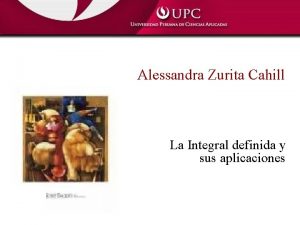
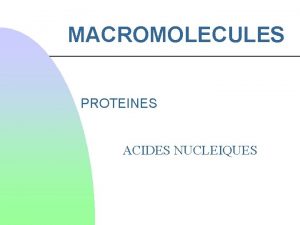
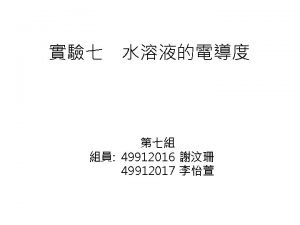
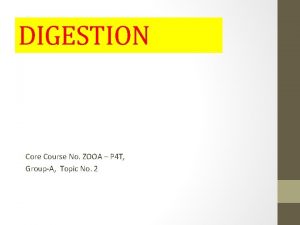


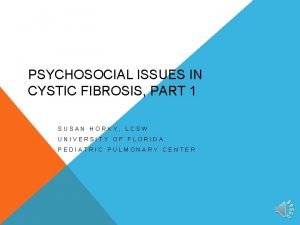
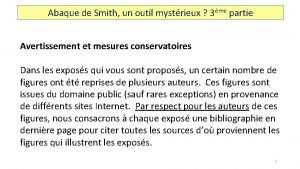


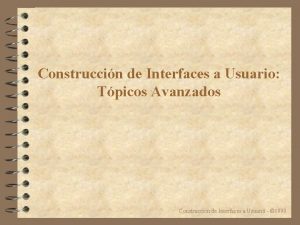

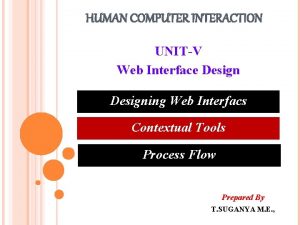

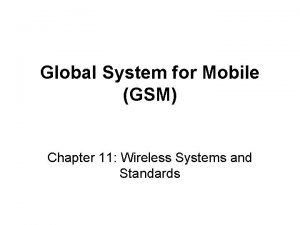
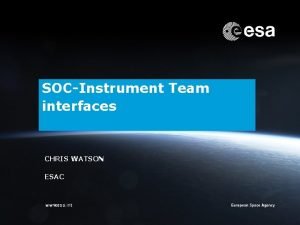
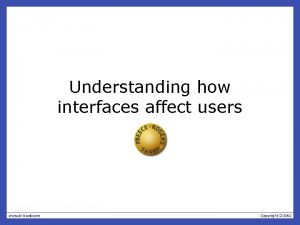
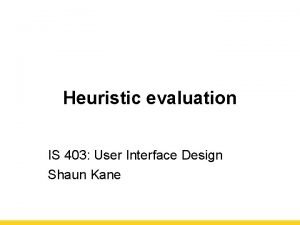


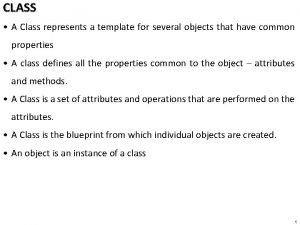
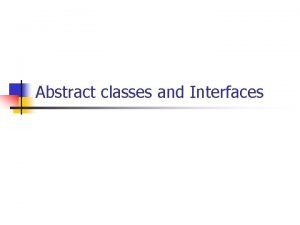

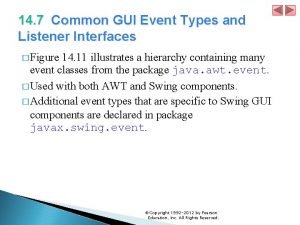
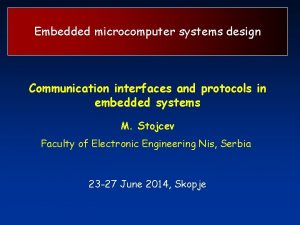
![[web user interface] [web user interface]](https://slidetodoc.com/wp-content/uploads/2020/12/3515569_e80293ca9d02734a3126f3e8d1d1c3b7-300x225.jpg)
